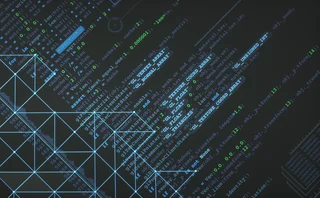The Future of TCA: Higher Risk Leads to the Need for More Data
BNP Paribas executive discusses how TCA has and will continue to evolve.

Brexit. The sterling crash. High-volatility events like these that took place during 2016 have pushed financial firms to take a second look at their transaction cost analysis (TCA).
But the volatility of the market hasn't been the only driving force leading firms to discuss TCA in more depth. New regulations, specifically the Markets in Financial Instruments Directive II (Mifid II), have also required firms to better measure and understand their execution process.
All of this also comes at a
Only users who have a paid subscription or are part of a corporate subscription are able to print or copy content.
To access these options, along with all other subscription benefits, please contact info@waterstechnology.com or view our subscription options here: https://subscriptions.waterstechnology.com/subscribe
You are currently unable to print this content. Please contact info@waterstechnology.com to find out more.
You are currently unable to copy this content. Please contact info@waterstechnology.com to find out more.
Copyright Infopro Digital Limited. All rights reserved.
As outlined in our terms and conditions, https://www.infopro-digital.com/terms-and-conditions/subscriptions/ (point 2.4), printing is limited to a single copy.
If you would like to purchase additional rights please email info@waterstechnology.com
Copyright Infopro Digital Limited. All rights reserved.
You may share this content using our article tools. As outlined in our terms and conditions, https://www.infopro-digital.com/terms-and-conditions/subscriptions/ (clause 2.4), an Authorised User may only make one copy of the materials for their own personal use. You must also comply with the restrictions in clause 2.5.
If you would like to purchase additional rights please email info@waterstechnology.com
More on Trading Tech
Robeco tests credit tool built in Bloomberg’s Python platform
This follows the asset manager’s participation in Bloomberg’s Code Crunch hackathon in Singapore, alongside other firms including LGT Investment Bank and university students.
FCA eyes equities tape, OpenAI and Capco team up, prediction markets gain steam, and more
The Waters Cooler: More tokenization, Ediphy lawsuit updates, Rimes teams up with Databricks, and more in this week’s news roundup.
Buy-side data heads push being on ‘right side’ of GenAI
Data heads at Man Group and Systematica Investments explain how GenAI has transformed the quant research process.
Technology alone is not enough for Europe’s T+1 push
Testing will be a key component of a successful implementation. However, the respective taskforces have yet to release more details on the testing schedules.
MayStreet founder says LSEG abandoned integration in new court filing
In response to LSEG’s motion to dismiss a lawsuit filed by the founder of one of its acquired companies, lawyers for Patrick Flannery have offered more details around communications between MayStreet and the exchange group.
As outages spread, it’s time to rethink how we view infrastructure technology
Waters Wrap: First AWS and then Azure. And these are only the most recent of significant outages. Anthony says a change is needed when it comes to calculating server migrations.
LLM firms come for finance, BMLL gets bought, LSEG users get Preqin feeds, and more
The Waters Cooler: Tradeweb completes fully electronic RFM swaptions trade, IBM cashes in on digital asset mania, and more frights and delights in this week’s news roundup.
TMX’s CEO wonders if tokenization is a ‘solution looking for a problem’
While acknowledging the potential of tokenizing securities, John McKenzie said regulators shouldn’t move too fast, and let customer demand drive adoption.








